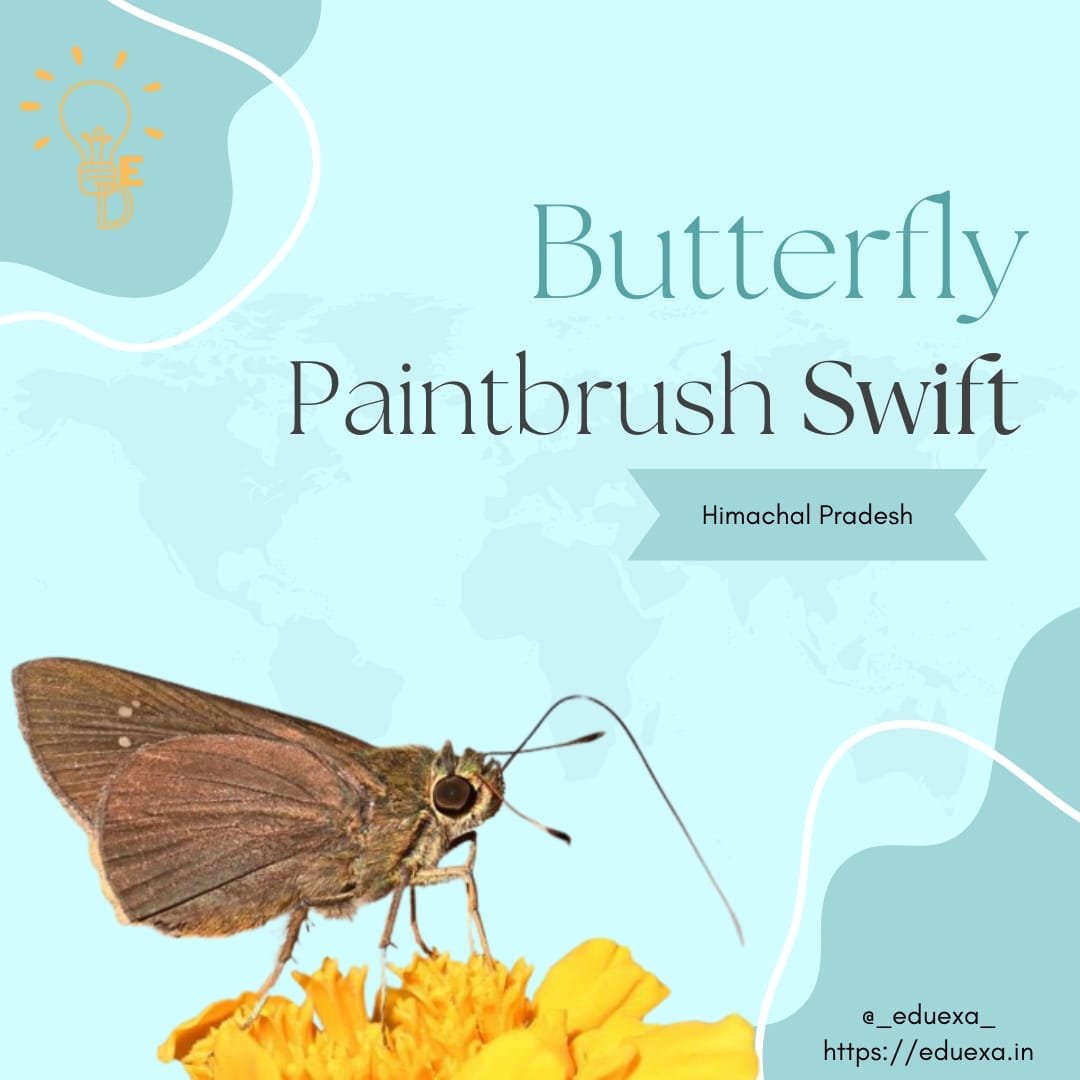Brief
The Scientific name of paintbrush swift butterfly is – Baoris Farri
Family – It is a butterfly species of the Hesperiidae family.
Recent Context –
Paintbrush Swift Butterfly was being photographed and documented in Himachal Pradesh(Part of Bhattiyat project). It was first of its kind because it has never been photographed in Himachal Pradesh since its discovery in 1878.
Read about more species in news here.
About the species
It was first described by lepidopterist Frederic Moore more than 145 years ago.
It is identified based on two separated spots in the upper forewing cell.
The species’ larvae are known to feed on bamboos and different other grass species.
Habitat:
Its habitat is distributed in northeast, central and south India, and rare in Uttarakhand.
Conservation status
This species is legally protected in India under Schedule IV of the Wildlife (Protection) Act, 1972.
Threats to the species
Various threats to the species include
- Habitat loss and scarcity of larval host plants are major causes of the decline in the butterfly population.
- An increase in pesticide use, (impacting flowers and plants which in turn affects the species)
- Excessive deforestation leading to habitat loss
- climate change
Conservation efforts
The discovery of the Paintbrush Swift in Himachal Pradesh brings to our notice the importance of habitat conservation.
First of all there’s greater need for more small species (insects and butterflies etc) specific research projects to know more about their nature, habitat, features and conservation needs.
Urgent conservation efforts are needed to protect the habitat, including the establishment of butterfly parks and conservation reserves, butterfly rearing or breeding centers, and native host plant species plantation.
Ex- Bannerghatta hosts India’s first butterfly park
Multiple areas and habitats should be covered under the conservation efforts with a major focus on areas with fragile ecology or those more prone to climate change effects.
Creating awareness about the importance of butterflies through community participation is crucial for their conservation.



